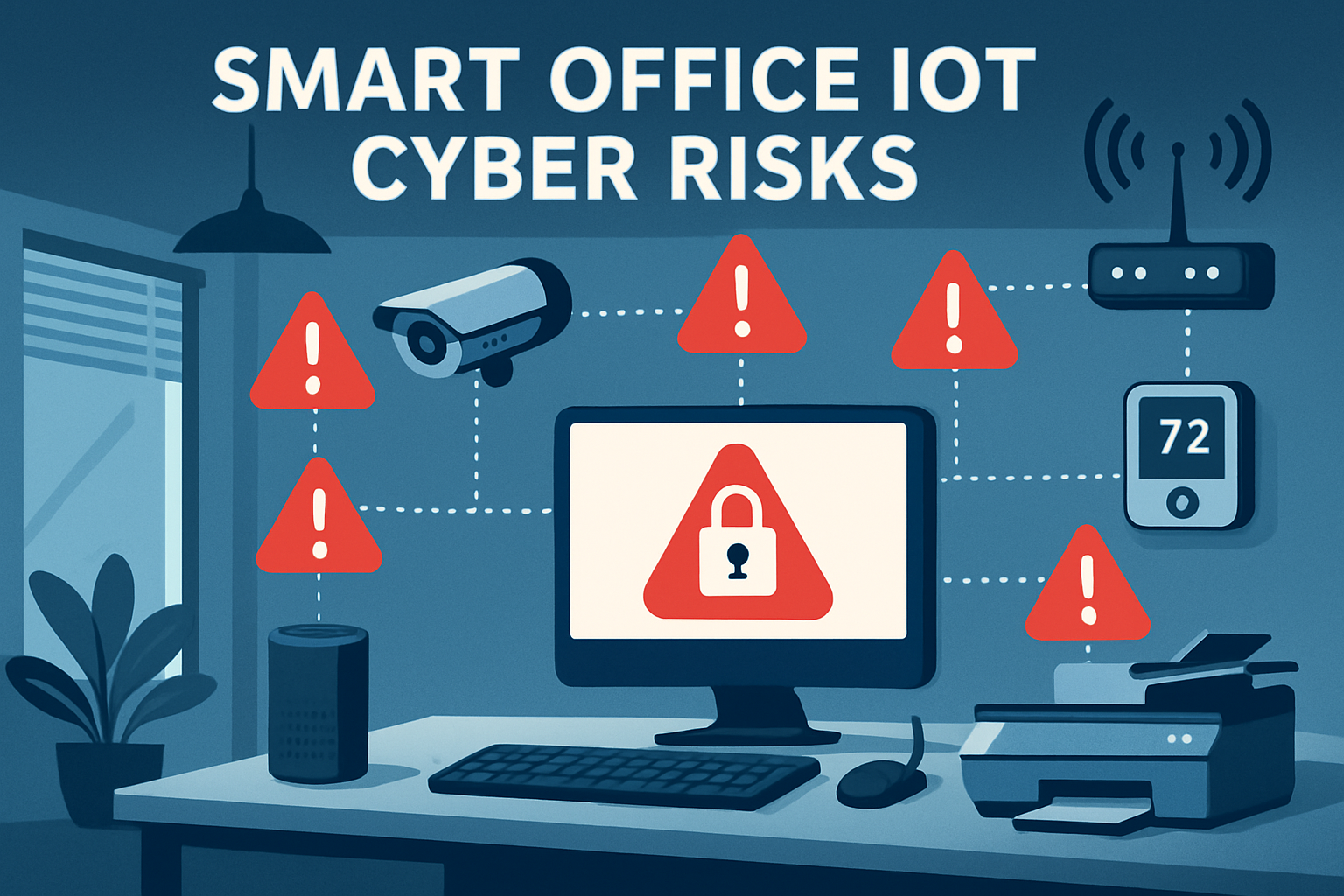What Orange County Businesses Need to Know About Smart Office Risks
Devices like your office thermostat, conference room speaker, and smart badge reader make life easier—but they can also open the door to your network...
6 min read
Jeff : Jul 16, 2025 11:04:00 AM
Over the past several years, remote work has undergone a significant transformation. Initially a temporary solution to maintain operations during a global crisis, it has now become a lasting work model for many organizations, particularly small businesses.
In this shifting digital environment, relying solely on good intentions or outdated security measures is insufficient. To remain secure, compliant, and competitive, your security strategies must advance as rapidly as the threats themselves. This article explores cutting-edge remote work security strategies designed for 2025, aimed at safeguarding your business, empowering your team, and protecting your financial interests.
Whether you're handling customer data in the cloud, managing international teams, or providing hybrid work options, today's remote operations present intricate security challenges.
Remote and hybrid work has evolved from trends into expectations, and for many, they're deal-breakers when choosing an employer. According to a 2024 Gartner report, 76% of employees now anticipate flexible work environments as the default. This shift, while offering more flexibility and efficiency, also creates new vulnerabilities.
As employees access sensitive data from homes, cafés, shared workspaces, and public Wi-Fi networks, businesses encounter a broader and more intricate threat landscape.
In 2025, remote work goes beyond distributing laptops and setting up Zoom accounts; it involves developing and executing comprehensive security frameworks that address contemporary risks, including rogue devices, outdated applications, phishing schemes, and credential theft.
Here’s why updated security matters more than ever:
A secure remote workplace in 2025 is not defined by perimeter defenses. It's powered by layered, intelligent, and adaptable systems. Let's explore the critical upgrades and strategic shifts your business should adopt now.
Assume breach and verify everything. Zero Trust isn't a buzzword anymore. It's the backbone of modern security. This model ensures that no device, user, or network is trusted by default, even if it's inside the firewall.
Steps to implement:
Expert tip:
Use services like Okta or Azure Active Directory for their dedicated support of conditional access policies and real-time monitoring capabilities.
Traditional antivirus programs are inadequate against modern cyber threats. EDR solutions deliver continuous monitoring of device activities, along with instant alerts, automated actions, and forensic analysis features.
Action items:
While VPNs still have a place, they're often clunky, slow, and prone to vulnerabilities. Today's secure access strategies lean into more dynamic, cloud-native solutions.
Recommended technologies:
These solutions offer scalability, performance, and advanced control for increasingly mobile teams.
Unpatched software remains one of the most exploited vulnerabilities in remote work setups. Automation is your best defense.
Strategies to succeed:
Critical reminder:
Studies show that the majority of 2024's data breaches stemmed from systems that were missing basic security patches.
Even the most advanced technology can't compensate for user negligence. Security must be part of your company's DNA.
Best practices:
Offer ongoing cybersecurity training in bite-sized, easily digestible formats.
Advanced tip:
Tie key cybersecurity KPIs to leadership performance evaluations to drive greater accountability and attention.
As employees access and share sensitive information across multiple devices and networks, the potential for data leaks—both intentional and accidental—has reached unprecedented levels. Data Loss Prevention (DLP) strategies are essential for monitoring, detecting, and preventing unauthorized data transfers within your environment.
Here's what you should do:
Expert recommendation:
Solutions like Microsoft Purview and Symantec DLP provide deep visibility and offer integrations with popular SaaS tools to secure data across hybrid work environments.
In a dispersed workforce, security breaches can arise from any source, including endpoint devices, cloud applications, or user credentials. A SIEM system functions as a central hub, gathering and analyzing data from your entire IT environment to identify threats in real-time and aid in compliance efforts.
Strategic steps:
In today's workplace, security is not a fixed barrier but a dynamic network that adapts with each connection, device, and user interaction. A robust remote security framework depends on the seamless integration of systems that can adjust, communicate, and protect in real time, rather than on isolated tools. Here are five crucial tips to help you consolidate your security strategy into a unified, flexible framework capable of withstanding modern threats:
Why it matters:
Disconnected tools create blind spots where threats can hide. A centralized dashboard becomes your security command center, giving you a clear view of everything from endpoint health to suspicious activity.
What to do:
Why it matters:
Multiple sign-on systems cause confusion, increase risk, and slow productivity. A centralized IAM platform streamlines access control while strengthening your security posture.
What to do:
Why it matters:
Cyberattacks move fast, your defense must move faster. AI and automation help you detect and neutralize threats before they escalate.
What to do:
Why it matters:
Cybersecurity isn't "set it and forget it." Your business evolves, and so do threats. Regular reviews help you stay aligned with both.
What to do:
If you're feeling overwhelmed, consider partnering with a reliable Managed IT Service Provider (MSP). They offer round-the-clock monitoring, assist with compliance, and provide guidance on strategic improvements, effectively becoming an extension of your internal team.
Why it matters:
Your security framework should be as dynamic as your workforce. Flexible, scalable systems are easier to manage and more resilient when your needs change.
What to do:
Remote and hybrid work are here to stay, which is beneficial. They provide flexibility, access to talent, and increased productivity. However, these benefits also bring new risks that require more intelligent and robust security measures. By utilizing tools such as Zero Trust frameworks, EDR, SASE, patch automation, and employee training, you can transform your remote setup into a secure, high-performing environment. These advanced strategies not only protect your systems but also ensure business continuity, regulatory compliance, and peace of mind.
Are you prepared to elevate your security? Partner with a trusted IT expert today to explore how innovative strategies can protect your business and keep you ahead of future threats. Your defense begins now.
Newport Solutions has been helping small businesses in Orange County, CA for almost 20 years. Our dedicated team provides comprehensive IT services, ensuring your business operates smoothly and efficiently. From IT support to cybersecurity, we've got you covered. Discover how we can become your business's IT department today.
We proudly serve the following areas: Newport Beach, Irvine, Costa Mesa, and the greater Orange County region.

Devices like your office thermostat, conference room speaker, and smart badge reader make life easier—but they can also open the door to your network...

For most small businesses, Wi-Fi is as essential as electricity—everyone expects it to “just work.” But when coverage is spotty or the signal drops...
